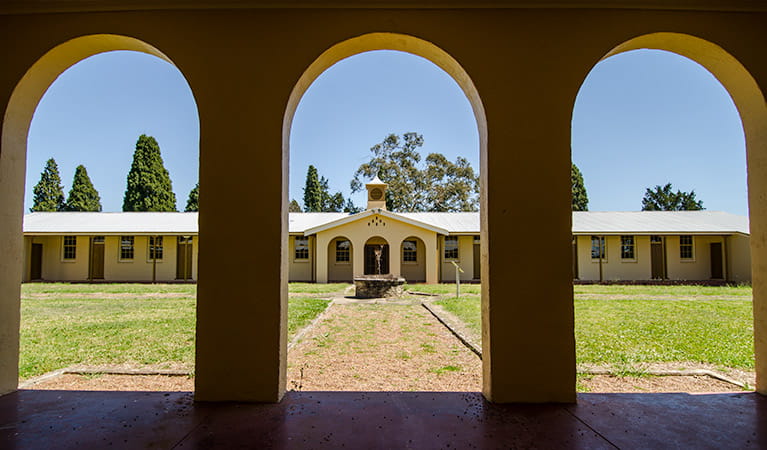
EBENEZER CHURCH
Just up the road from the Hawkesbury River in Ebenezer is Australia’s oldest continuously used church where you can now enjoy a cup of Devonshire tea.
Although the Church was built in 1809, the site has been a significant place since precolonial times, as the Hawkesbury River was known as Dyarubbin by the Dharug people. Ebenezer Church was constructed with funds from its eight ‘founding’ families aboard the ‘Coromandel’ in June 1802; Davison, Hall, Howe, Johnston, Johnstone, Mein, Stubbs, and Turnbull, amongst others. The original sandstone bricks visible today were donated by George Hall and transported from across the river in Pitt Town.
The nearby shaded cemetery is also considered one of the most important burial sites in colonial history, as the inscriptions describe the lives of the early settlers and founders of the Church. Unfortunately, the Great Hawkesbury Flood of 1867 decimated all cemetery burial records, with floods also occurring in 1805 and 1956.
Outside the original Schoolmaster’s House built in 1817, visitors can enjoy a Devonshire tea or coffee service with fresh scones under the grape-covered pergolas. The Schoolmaster’s House is open daily from 10.00 am to 3.00 pm, Wednesday to Sunday. Inside the two-storey sand-stone building, you’ll find locally made jams, crafts, souvenirs, family and church history books available for purchase.
For large bookings, you can contact the church shop at 02 4579 9350 or by emailing them on [email protected].

SCHEYVILLE NATIONAL PARK
Tucked away near Pitt Town, you’ll find a protected national park rich in history and natural beauty. Scheyville National Park is a historical time capsule that offers a 1.1 km Migrant Heritage Walk within its Camp Precinct, as well as its 4 km Long Neck Lagoon Walking Trail. In the early 20th century, Scheyville served as a casual labour camp providing short-term employment for unemployed or vulnerable men. From 1910-1940, the site functioned as a Government Agricultural Training Farm, teaching young British men farming skills before they became apprentices.
Throughout the Migrant Heritage Walk, you’ll discover the original Dreadnought dining hall and brick dormitory buildings that these young boys stayed in. Between 1949 and 1964, Scheyville became a place for migrant settlement as seen by the remnants of the rusted Nissan huts.
It’s estimated that in this time, over 1500 people a year from more than 22 countries lived in these temporary accommodations. Along the walk, you’ll also discover the Office Training Unit, which operated from 1965 to 1973. The interpretive panels and photographs across the site detail how cadets were trained and called in for service by the Australian Army.
Scheyville’s historical status on the NSW State Heritage Register isn’t all the site has to offer – the Longneck Lagoon Trail offers visitors a chance to birdwatch over 140 recorded species in the park. As a permanent freshwater wetland, herons and egrets will often fly above as well as ducks, grebes and spoonbills, within the 4 km stretch. Scheyville National Park also offers a 12 km horse riding trail across beautiful creeks, woodlands and grasslands.
You can visit Scheyville National Park at 71 Memorial Drive in Scheyville, from 8 am to 6 pm (May to August) or 8 am to 8 pm (September to April). However, the park (except for Longneck Lagoon) is currently closed for pest control until the 22nd of July, 2024.










